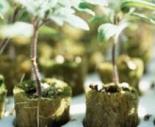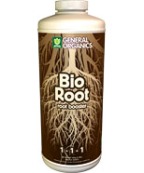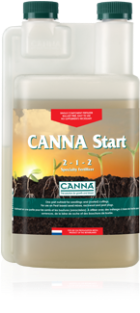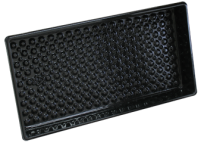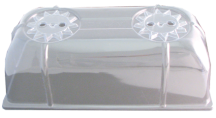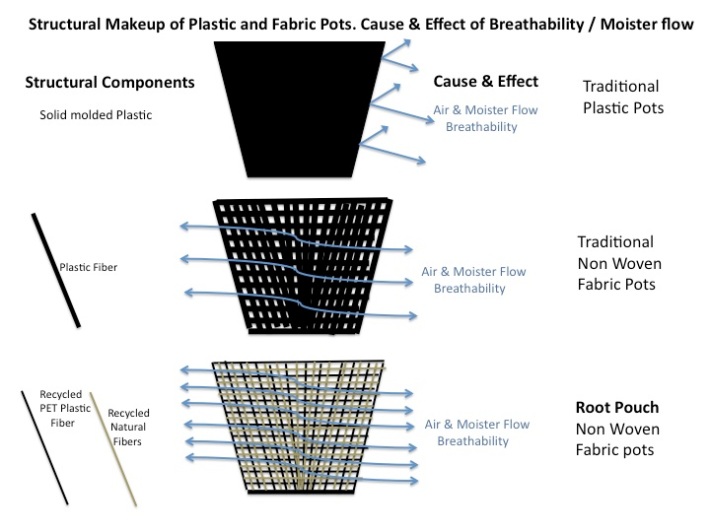Here we have a compiled small hydroponics glossary of common words used the indoor gardening/ hydroponic community. We hope you do find it useful.
A-
Acid– any substance with a pH below 7.0 (neutral).
Acidic– of an acid or its properties; a decrease of pH during a chemical process.
Aeration– the addition of air into a media or solution.
Aerobic– a biological process or reaction that requires oxygen.
Alkaline– of a base or its properties; an increase in pH during a chemical process.
Anaerobic– a biological process or reaction that occurs in the absence of oxygen.
Apex stem– the growing point at the top of the main stem. Also called the plumule.
Aril– the outer coating of a seed.
Asexual– reproduction without the contribution of genetic material form another parent.
Antiseptic– a chemical substance that destroys all microorganisms.
Antibiotic– a chemical substance, usually produced by a microorganism, that when present in small quantities, destroys or inhibits the growth of a harmful bacteria.
Axial stem– any growing point that originates from the union of the main stem and petiole (leaf stem). Also called a lateral stem.
B-
Bacteria– an extremely small and simple organism that is capable of asexual reproduction.
Base– any substance with a pH above 7.0 (neutral).
Biological– the process of a living organism.
Basic– of a base or its properties; an increase in pH during a chemical process.
Botany– the area of biology that specifically studies plants.
BTU– British Thermal Unit, a unit of measurement of the required energy to raise the temperature of 1 pound of water by 1 degree Fahrenheit.
C-
Carbohydrate– any of a group of organic compounds that include sugars, starches, and cellulose that are made up of carbon, oxygen and hydrogen.
Catalyst– any chemical or agent that affects a process or reaction without being altered itself.
Cellulose– a natural polymer of glucose that forms the structural material of a plant’s cell wall.
Chelate– a chemical that temporarily bonds to another compound that can be released to a biological process whereas the compound may not normally be available, usually heavy metal trace elements such as iron or zinc.
Chloroplast– the organelle inside a plant cell that contains chlorophyll and is responsible for photosynthesis and some protein production.
Chlorophyll– the green pigments in plants that act as photoreceptors necessary for photosynthesis.
Chlorosis– the yellowing of a plant part as the result of a harmful growing condition.
Clone– a plant produced by asexual reproduction.
Compound– a substance made up of atoms of different atomic numbers such as Calcium nitrate (CaNO3) and water (H2O)
Compost– the result of controlled biological decomposition of organic material.
Conductivity– the ability of a solution to carry an electrical current via the dissolved elements and compounds in solution.
Conductivity meter– an electronic meter designed to measure the ability of a solution to carry an electrical current in relation to the concentration of dissolved elements and compounds in the solution.
Cultivar– a cultivated species of plant for which there is no known wild ancestor.
Cupping– the inward curling of the leaf margins either up or down in response to a dramatic change in the growing conditions.
Cutting– a portion of the plant that has been removed for the purpose of asexual reproduction.
D-
Damper– ( commonly referred to a backdraft dampner) a device used for regulating airflow.
E-
EC– a unit of measure for the amount of electrical current a solution can carry usual expressed in micro or milliSiemens per sq. centimeter (uS/cm2, mS/cm2)
Effluent– the waste material produced from a biological process.
Element– a substance made up of atoms that have the same atomic number such as oxygen (O2) and nitrogen gas (N2).
Emulsion– a stable suspension of one liquid into another with which will not mix.
Enzyme– a group of catalytic proteins that are produced by living organisms that have an effect on a chemical or biological process of life without being altered themselves.
F-
Fertilizer– a product that is applied to the growing media that provides the complete level of nutrition for that specific plant in the applied growing conditions.
Foliar– pertaining to the leaves.
Footcandle– a unit of measure for light intensity also expressed as 1 lumen.
Fungicide– any substance that prevents or destroys the growth of fungi.
Fungus– a nucleated, usually filamentous, spore bearing organism devoid of chlorophyll.
G-
Germinate– the initiation and development of a plant from seed.
Glucose– C6H12O6 the simplest form of a group of compounds called sugars. Glucose is the primary energy source for nearly ALL cellular functions. The glucose molecule can also be arranged in the form of lactose and fructose. These 3 compounds are also the building blocks for ALL carbohydrates.
Growth regulator– any substance that controls the speed or type of growth of all stages of a plant.
H-
Herbicide– any substance that prevents the growth of or kills plants.
Hormone– a compound produced by an organism to be transported to another part of the organism to influence a specific physiological process.
Host– the organism on or in which a parasite lives or the dominant member of a symbiotic relationship.
Humidistat– an instrument that measures and controls equipment to effect humidity.
Humidity– the presence of water vapor in the air.
Hygrometer– a device that measures the quantity of water vapor in the air expressed as a percentage of the maximum amount that the air can hold (% relative humidity or RH)
Hydroponics– the cultivation of plants in an inert and sterile growing media where nutrition is provided entirely by a nutrient solution applied to the root zone.
Hyphae– filaments composed of the mycelium of fungi.
I-
Inert– having no activity, reactivity or effect.
Inorganic– matter that is not derived from any biological process or activity.
Insecticide– any substance that prevents or kills insects.
Interveinal– the area of leaf tissue between the vascular bundles (veins).
Ion– any electron, positron, element or compound which has an electrical charge.
L-
Long-day plants– most commonly annuals such as tomatoes and peppers, plants that complete its entire life cycle when the day-length is longer than the night-length. Maintaining this photoperiod is crucial to the growth and development of the plant.
M-
Macronutrients– Nitrogen, phosphorus, potassium, calcium, sulphur and magnesium. The elements taken in by plants which are used in large quantity and tend to become fixed in internal plant structures.
Media– the material in which plants grow.
Meristem– any of the growing tips of a plant.
Metabolism– the combination of all physical, biological and chemical processes by which an organism grows.
Mineral– a naturally occurring inorganic substance with a characteristic chemical composition.
Micro-nutrients– also called trace elements, the elements used in very small amounts by plants and are used for certain biological processes. They are often mobile within the plant and large accumulations can be toxic. Zinc, iron, chlorine, boron and molybdenum are a few.
Miticide– any product that prevents or kills mites.
Mottling– irregular discolorations on a leaf.
N-
Necrosis– the death of living tissue.
Nutrient solution– an aqueous solution of fertilizer and supplements to be supplied to the root zone of plants
P-
Parasite– an organism that obtains its food and/or shelter at the expense of another organism.
Pathogen– a disease or harm producing agent.
Petiole– the stem that supports the leaf of a plant.
pH– a term used to describe the hydrogen ion activity in a solution or system. The concentration of hydrogen ions determines how other elements interact and their availability to plants roots. Normal range is from 0 to 14 with pH7 being neutral. pH levels below 7 are acidic and pH levels above 7 are alkaline or basic.
Phloem– highly structured, food carrying vascular tissue in plants.
Photoperiod– period of time including the day- and night- length.
Photoperiodism– the physiological response of plants to the day-length, night-length or combination of both.
Photosynthesis– the process occurring in plant where light energy is used to synthesize glucose from Carbon dioxide in the air and water from the roots. This is done by t chlorophyll within the chloroplasts in the cells of plants.
Pistil– female part of the flower that captures pollen.
Pollen– genetic material created by male flowers.
Pollenation– transfer of pollen from the stamen to the pistol often done by external mechanical means (insects, wind).
PPM– Parts per Million, a unit of measure for the amount dissolved solids in an aqueous solution.
PSI.– pounds per square inch, a unit of measure for pressure.
R-
Reflectance– the ratio of the amount of incident energy on a surface to the amount of energy reflected from the surface.
S-
Salts– ionic compounds which contain a metallic element. Table salt is Sodium chloride.
Scarify– to break the outer coating of a seed in order to promote germination.
Semi-permeable– a membrane that allows the passage of certain solvents and compounds but not others.
Stoma– openings on the underside of leaves that a plant can open and close to regulate transpiration and air exchange. Plural- stomata
Short-day plants– most commonly tropical annuals such as poinsettias and orchids, plants that produce flowers and fruit seasonally when the day- length is equal to or shorter than the night-length. Maintaining this photoperiod is critical in ensuring prolific flowering.
Supplement– a product used to complete a nutrient solution, supply a deficiency, or provide components for a desired effect on plants.
Synergism– the joint action of agents, such as supplements, that when used together increase each other’s effectiveness.
Systemic– the ability of a substance to be absorbed by and transported through a plant.
T-
Transpiration– the passage of water through a plant from the roots, through the vascular system to the atmosphere.
Turgor pressure– the pressure developed by the fluid content of a plant cell. This pressure swells the cell and keeps the plant erect and allows the orientation of leaves.
V-
Virus– a group of infectious agents that require a living cell as a resource for existence and reproduction.
W-
Wetting agent– a compound that reduces the water repellency of a surface.
X-
Xylem– the primary water conducting tissue and the major supporting tissue of higher plants.

